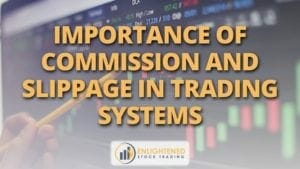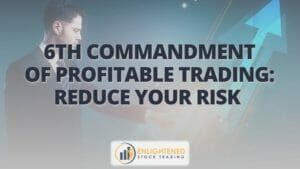People often ask whether they should start paper trading for a while before launching in with real money. It is would worth spending a little time exploring this because the answer is not as straightforward as ‘yes’ or ‘no’.
How Do You Paper Trade?
It is the process of running your system and taking the trades virtually as opposed to in a real account. The name comes from the idea that you write down each of your trades and the price you entered and exited them on paper rather than placing the trade in your account.
This is done by programming your trading rules into the software you use to scan the market each day (for example Metastock) and recording the price you would have entered at, the initial stop, calculating the position size and exit price along with time, date and any other observations. You then monitor the trade as it progresses and record the trade outcome according to your system rules.
Over time this gives you a theoretical record of your virtual trading results which you can convert to R multiples to determine your expectancy (Average profit per dollar risked) and other system performance statistics. It also gives you practice at running your trading system and determining the size of each position.
Some brokers will allow you to open a simulated trading account which you may find helpful for this, but given my whole approach is designed to maximize return for effort and does not to sit in front of the screen taking trades all day long, the administration involved with recording your paper trades in a spread sheet is probably minimal.
Is It Actually Useful?
While this sounds like a useful way to get a ‘feel’ for a trading system, it only tells you part of the story. When you paper trade you get a good understanding of the mechanics of running the system up to, but not including, order entry.
It will therefore provide you with good insight into how long it takes each day, how many trading signals you will get in a given day, how to calculate position size and how to apply your entry and exit rules.
What it doesn’t do (by definition) is put your real money on the line. So while you will get an idea of the mechanics of running your new system, you will not get an understanding of the psychological pressures and impact of running the system.
Van Tharp will tell you that psychology is 90% of trading success, and so paper trading gives you exposure to (at best) 10% of what is required to be successful.
Paper trading is not a substitute for real trading experience!
If you are not familiar with the mechanics of running a trading system, calculating position size and recording your trades, then it will be useful for you. however, it is not a substitute for real trading experience.
What Is The Alternative?
As discussed above, it may be worthwhile to trade on paper to get a feel for the mechanics of running a new trading system. Beyond this we prefer to move into a piloting phase in which you trade the system with a small amount of capital which is speculative, at a very low level of risk per trade.
Using real money forces you to take the trial seriously, eliminates cheating (which is possible, and very easy to do when you paper trade – whether conscious or not) and gives you some exposure to the psychological pressures of running the system.
Once you have made a predetermined number of trades in your pilot study (say 30 – 60 depending on the nature of the system) to allow you to get a meaningful estimate of your trading system performance, you are then in a position to scale up your trading if you are happy with the results.
How Should I Approach It?
Rather than just starting to paper trade with no particular goal in mind, we propose a three stage process which will help move you through to full scale system trading once you are comfortable. These stages are applicable whether your trading system will be used in the stockmarket, futures, commodities or forex markets. The three stages are:
- Paper trade: Understand how the system works, collect real time data and ensure the mechanics of the system are not too onerous. For example, are you getting 1-3 trades a day (manageable) or are you getting 20 trades a day (not manageable). You should also error check the system by ensuring your simulated results and actual trading results are as close as possible.
- Low risk, real money trial: Trade your system with a small amount of real money at a low level of risk per trade. This will help you gain psychological comfort and ensure the system fits your personality. Error check again at this point.
- Scale up: Once you are comfortable with your real money trial results you can begin to scale up to trading at a risk level that will meet your objectives. Depending on the nature of your trading system you may need a scale up plan or you may just be able to start full scale trading immediately.
If you are experienced you could skip step 1, however, we advocate having a trial period for any new system. This ensures you can pick up any mistakes or psychological problems with the system before you are risking too much money.
Conclusion:
In conclusion, paper trading can be useful but it is not a substitute for real world experience. It is a way of easing into running a new trading system, or a way of gaining experience while you build your initial account. It does not teach you everything and should not go on for too long because you will never meet your trading objectives if you don’t actually trade!









Hi.
I’m contemplating using Ninjatrader for my trading platform, but would like to avoid any monthly fees, so I was wondering if their free EOD service is suitable for trading using obviously, the daily time frames?
Thank you.
Hi Alex,
I have not used Ninjatrader as I use Amibroker, however if you can get EOD data from Ninjatrader then you could certainly use that platform. I understand that it is quite a solid backtesting platform. My only issue with it was that there seemed to be a restriction of only using US stocks, unfortunately I need Australia, Asian and European markets as well so it didn’t make my list. If you are ok with only trading US Stocks then it is probably ok. Just make sure you use a stock trading system that is designed and backtested on EOD bars.
Adrian